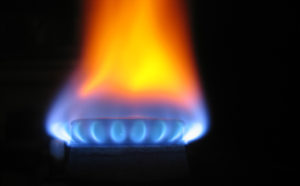 Natural gas reached the highest level since June 5th on chilly weather outlook ahead of a government report that may show a larger-than-average withdrawal in US inventories last week.
Natural gas reached the highest level since June 5th on chilly weather outlook ahead of a government report that may show a larger-than-average withdrawal in US inventories last week.
On the New York Mercantile Exchange, natural gas futures for settlement in January traded at $3.994 per million British thermal units at 15:54 GMT, up 0.14% on the day, after reaching a 6-month high at $4.005 per million British thermal units at 15:07 GMT. Day’s low was touched at $3.949. The energy source rose by 0.8% on Monday, a ninth consecutive daily advance, and extended its weekly gain to nearly 1% on Tuesday. Prices settled 4.5% higher last week after surging 6.4% in the preceding two five-day periods.
NatGasWeather.com predicted a bitter cold blast to swing in the Western US and the Central Plains, leaving areas of moderate to heavy snow. The Arctic outbreak is expected to move through the Pacific Northwest and Great Basin on Tuesday, after which it will sweep into the Plains and South on Wednesday. The impacted region will experience strong winds, heavy snow and the coldest temperatures for the season, which will increase demand for natural gas. Bitter cold temperatures, close to 0 degrees Fahrenheit are also expected during the next few days in the Northern Plains, after which the Arctic weather formation will make its way deep into the South. However, the Eastern US will gradually warm, with temperatures near or above normal, temporarily easing natural gas demand over the highest-consuming states until late this week, when the colder air finally reaches the area.
NatGasWeather.coms extended forecast for the week ending December 16th called for much colder weather than normal across most of the US densely-populated areas. The chilly conditions are expected to be in place by December 10th and to remain until the end of the week. There is likelihood of few winter storms over the northern and central US, with areas of accumulating snows and strong winds. The cold blast will probably lower temperatures by 15-20 degrees Fahrenheit below average.
According to AccuWeather.com, the low in Chicago on December 11th will be 14 degrees Fahrenheit, beneath the average of 24 degrees, while readings in Boston will be 22 degrees Fahrenheit, 8 degrees below average. The low in New York on December 10th will be 26 degrees Fahrenheit or 7 degrees beneath average.
When cold weather is expected, natural gas surges as increased electricity demand to power air-conditioning calls for more supply of the fuel, which is used for a quarter of U.S. electricity generation. Above-average readings in the winter season have the opposite effect. Consumption usually picks up from November through March. According to the Energy Information Administration, power generation accounts for 32% of U.S. gas demand and 49% of U.S. households use the energy source for heating.
Last week, an EIA report showed that total gas held in U.S. underground storage hubs equaled 3.776 trillion cubic feet and were 2.6% below last year’s amount of 3.876 trillion. However, the surplus over the five-year average inventories widened to 0.5% from 0.4% a week earlier.
Meanwhile, U.S. supply levels remained in focus. Early withdrawal estimates for this week’s storage data range from 109 billion cubic feet to 148 billion cubic feet, compared to a drop of 62 billion cubic feet during the same week a year earlier. If confirmed, this would sharply exceed the five-year average decline of 41 billion cubic feet, providing further support to the market.





